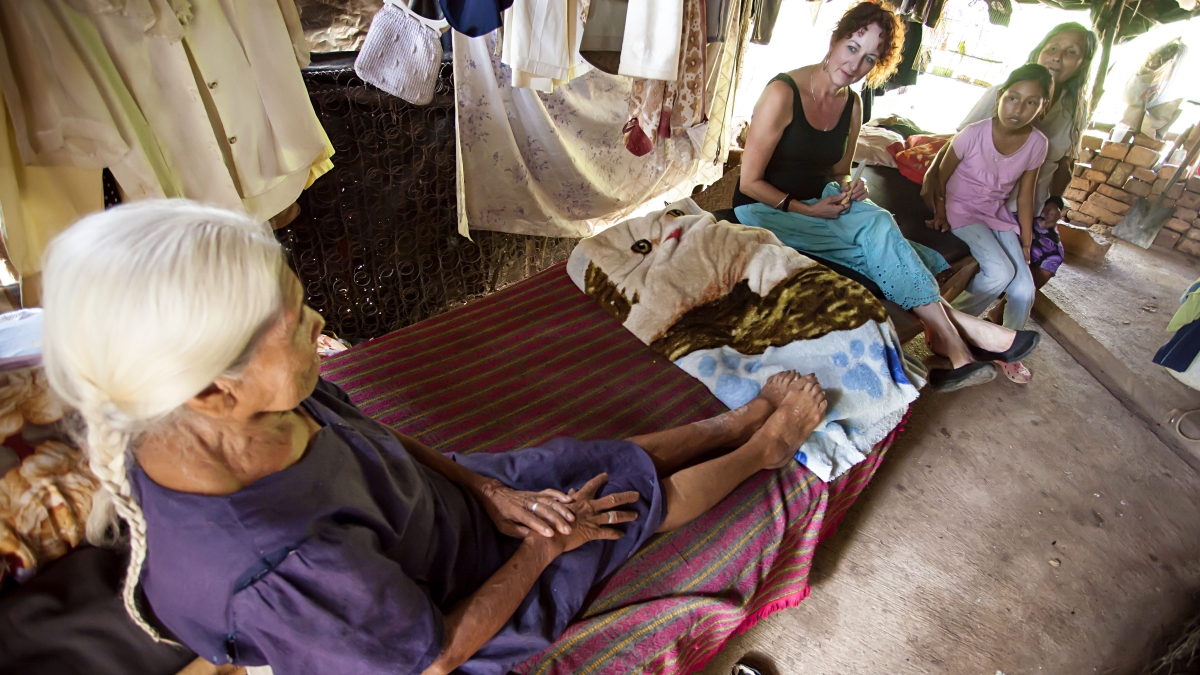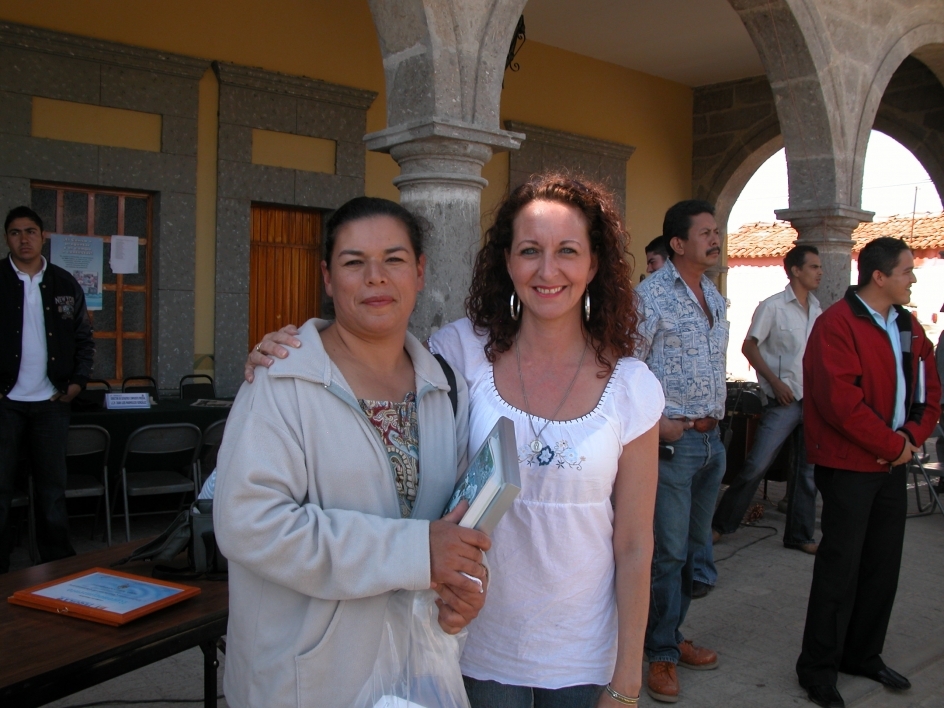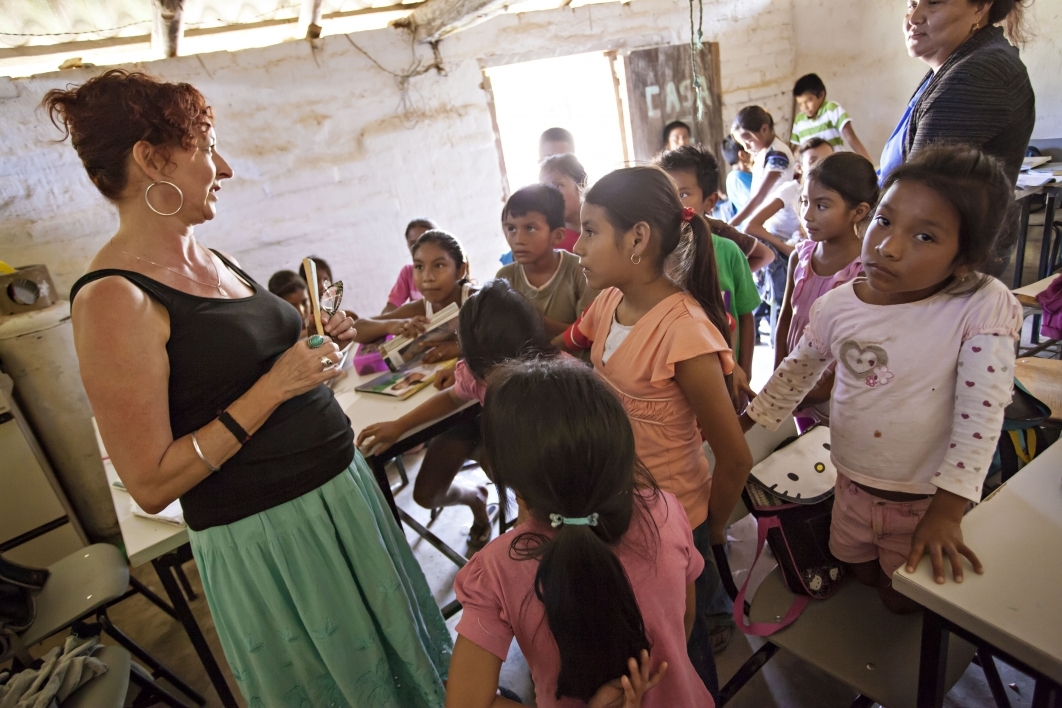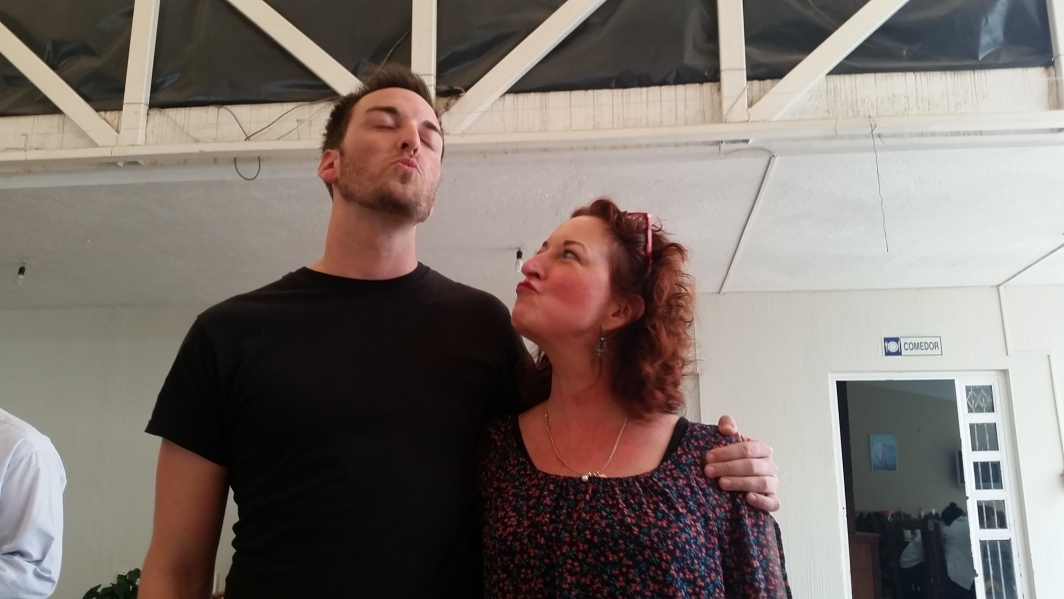Few individuals can honestly say they’ve made a positive difference in the lives of thousands of people, but an Arizona State University and ASU Thunderbird School of Global Management alumna quietly has been doing so through a nonprofit organization she started in 2006.
After graduating from Thunderbird in 2005, Laura Libman set out to return to help those in need in her family’s beloved Mexico, the country where she spent her summers as a child at her aunt’s ranch, playing with the rancher’s kids.
She didn’t return to her aunt’s ranch but to 30 different austere communities tucked in the Guanajuato mountains of central Mexico, where she put her Thunderbird international development MBA degree to work by studying the municipalities to understand their needs.
“It became really apparent quickly that health was the issue,” Libman said. “It was just horrific the stories I was hearing.”
Women were dying from childbirth. Farmers lost limbs unnecessarily to gangrene after cutting themselves accidentally while working. Winters brought influenza to the villagers, and malnourished children died as a result. No doctors wanted to live in those areas. Health education and resources were badly missing.
“The data said that of the people that had been doing OK and then fell into serious, horrible poverty — not enough to eat, no shoes for their kids — 83% of the time it was a health-related incident that put them there,” Libman said.
How it started
The night before graduation, Thunderbird offered Libman a $5,000 seed grant in exchange for a business plan detailing how to move forward with her passion of helping underprivileged people.
Libman invited her Thunderbird friends to help write a plan and fill in the gaps where she lacked expertise. And in one “all-nighter” fueled by her homemade Mexican food, they assembled a 68-page business plan. Well-received by Thunderbird and other supporters, such as the Arizona Community Foundation, the plan was the start of what would become the Tia Foundation.
That seed grant paid for Libman’s three-month community studies trip to the Guanajuato mountains in 2005 and shaped the future foundation’s focus, captured in their mission statement of bringing “access to lifesaving health care and preventative education to the poorest, most remote places in Mexico … ”
“I designed a model that was very ‘teach them to fish’ and also self-sustaining, after doing a bunch of research on best practices around the world,” said Libman, who serves as the Tia Foundation president and CEO.
Sustaining it
Instead of setting up clinics in places lacking people and skills to support them, Libman establishes teams of “promotoras” — local women, mostly, selected by their communities who are trained to be “the clinic.” Equipped with a well-stocked village medical kit entrusted to them, the promotoras go house to house giving care in their community.
To ensure Tia projects become self-sustaining, Libman negotiates first with the municipal “ayuntamientos” or local councils. She reassures them the project will cover the whole municipality.
“I don’t sign a contract with a municipal president because he’s gone in three years, and the next guy if he’s a different party, he won’t honor the agreement,” Libman said. “But if the ayuntamiento signs off on it, it becomes an act.”
The ayuntamientos agree to replenish the medical kits Tia donates to each community, and to provide health workers continuing education. If they forget their promise, Libman leverages relationships with state representatives at the national level in Mexico City, who remind the ayuntamientos of the commitment they made.
Tia’s volunteers — including doctors, nurses, physical therapists, psychologists, nutritionists, occasional chemists and others — have helped half a million people in rural parts of five central Mexico states since the nonprofit started 15 years ago, Libman said. Through the years more than 500 individuals have volunteered to work with the team.
“We put up a post on Facebook and 10 minutes later we have a brigade with a mix of specialties,” Libman said. “I’m amazed.”
Tia relies on the local villagers to make all the arrangements to host the team, lodging, food, water, clean classroom space, etc. Conditions are usually austere. Once the team is set, they do medical consultations in the morning and teach classes in the afternoon.
Community pride
The demand for Tia is high but not every village with needs gets selected. Libman uses a 28-point assessment matrix to determine suitability. The assessment includes staff safety, local government support, community cohesiveness and other criteria.
Libman tells the story of upset villagers who confronted her during a Tia project in the Los Altos highlands of the state of Jalisco.
“A group of women from the other municipality we didn’t choose came and said ‘Hey, how come you didn’t choose us? We need this too,’” Libman said.
Libman opened her laptop to review the assessment matrix for the women’s village. It soon became clear they fell short of the prerequisites.
“You have a 93-year old woman there, nobody checks on her, nobody helps her clean, or feed her,” Libman recounted. “You have a woman whose husband is beating her near death. She has five children, and nobody is doing anything about it. There is no law enforcement. Your ‘plaza principal’ is a mess. I don’t see any community pride there.”
Libman told them to fix their issues. The Tia team was set to return in the future to that same area to follow up on villages they did help, and could revisit with the villagers who did not get picked.
“If they can sustain it for at least two years, then I can go back to the U.S. and raise money for the project,” she said. “But it has to last. You can’t just clean it up for a while and think I’m going to come back.
“And guess what? They did it!”
The villagers went back, held community meetings. They assembled groups to fix the different issues, cleaning the plaza, checking on elders, and even a group to deal with the abusive husband.
“So yeah, I went back,” Libman said. “Went back like six times, and the changes lasted.”
Road to progress
The Tia model not only improves community health but leads to a multiplier effect on progress within the served populations.
“They are learning how to take care of their own problems,” Libman said. “We leave them a model they can replicate.”
Libman tells the story of “Juana,” one of her proudest alumni. Training by Tia led to Juana saving the life of her best friend, who was having a breach baby. Juana also taught her sons the Heimlich maneuver, and one of them saved a choking kindergartener. Juana was inspired to do more.
Juana dreamed of a nursing career. But she lacked the money, and because her village only had an elementary school, she lacked the education to pursue her dream. Juana took action so the next generation would have better opportunities.
Juana organized groups in her town to lobby the government for a satellite middle school. She designated one group to travel to convince the state education secretary. Another group walked the village asking for “pesos” for bus fare so the others could reach the capital. A different group watched the children for the mothers making the out-of-town journey.
The lobbying efforts took time, and weekly trips, to make their case to the education secretary.
“She got the ‘tele secundaria’ (satellite middle school),” Libman said. “And then she said ‘we’re not done, we need a high school.’”
Libman returned to Juana’s region in recent years. Juana heard about it and made her way to visit with the woman and organization who inspired her.
“I had not seen her since 2007 or 2008, and she shows up with a young woman, and she didn’t think I would remember who she was, but of course I did,” Libman said.
The young woman was Juana’s daughter who was an “adorable 4-year-old” when Libman had first met Juana. The daughter was about to graduate from high school, and, like her mom, dreamed of nursing.
“We arranged to get her a scholarship to a nursing school,” Libman said. “Then I got a message from Juana last week with a picture of herself saying she graduated second in her class at a paramedic school, Juana did.
“So yeah, Juana. Every municipality without exception has done something like that. Some is water quality. Some is access to produce, and to protein because it is so hard for them to afford it, and it doesn’t grow easily in that terrain.”
Tia returns to Juana’s region in March. The COVID-19 pandemic slowed down operations but did not stop them. Tia will prescreen patients to ensure they are not infected. Since Juana volunteered to assist, she will help triage villagers and serve as a mentor to a new batch of health workers who will learn to deliver babies, insert IVs, diagnose diabetes with a glucometer and perform other life-saving functions.
Those who helped
Libman is grateful for the opportunities and faculty support and encouragement she received while attending ASU and Thunderbird. She was a single working mom, a nontraditional older student who survived on sleeping four hours per night.
“I am very fortunate, especially for a woman,” she said. “I own a home. I was able to get an education. I had a good career. That’s something we take for granted here, that many of us have the ability to do if we work hard and seek mentors to help us get there.”
She is especially thankful to the Los Diablos alumni chapter for the scholarship that allowed her to complete her ASU undergraduate work in one year by studying full time, as opposed to stretching it out part-time another four years. She graduated valedictorian from the ASU West campus in 2003 with a degree in English.
“Because they did that, look at what a difference it made in my life,” Libman said. “Who knows if I would have gone to Thunderbird and done this if they hadn’t helped me. I told them I was going to use the money to give back to my community, and I did.”
Libman credits her Mexican mother and Army veteran father for instilling in her a sense of duty to help those less fortunate.
“They told me all my life that ‘you are a fortunate person and it is your duty, your responsibility to give back more than you’ve gotten from your life because there are many who can’t,’” Libman said. “The world is never going to be a better place if people who have the ability to do more don’t.”
It is that sense of duty that pulled Libman back to the Mexico she knew from childhood, and the disparities she understood even at a young age.
“When I was doing the research it really churned up a lot of old memories of being a child in my aunt’s ranch and playing with the children of the ranch hands, and seeing how they lived,” she said. “And when I came back and seeing that nothing had changed. Those kids still had no access to school. Those kids still didn’t have enough to eat.”
The future
Tia is aiming for a new project to help the “huicholes” — an Indigenous tribe living on top of a mesa between the states of Jalisco and Nayarit. Many in the tribe only speak their dialect, not Spanish. They are a closed-off group but Libman has met with their leader and some of the women from the tribe who come into the city of Guadalajara to sell their crafts.
It will be risky to reach the huicholes. Each year a bus goes over the ravine along the way and everyone dies, Libman said. A small airplane may be the best option to get the Tia team there, but that comes with a $20,000 dollar price tag. Tia submitted grant applications and is awaiting approval.
“The need there is so huge,” Libman said. “There are about 50,000 people out there without anything.”
Libman met a tribal mother with a daughter, 7 or 8, who wouldn’t speak. The mother described her as “slow” and confirmed she could not talk. The mother said it was due to malnutrition during pregnancy, and lack of nutrients for the baby after birth. Vitamins, which are part of the medical kits Tia donates, could have helped.
“I met so many of them that had so many preventable issues,” Libman said. “It didn’t have to be that way, but that’s the way it is. And we want to get up there.”
Libman is working on a succession plan to keep Tia going into the future. The model she set up works. People from other countries have sought her counsel. She even had a government minister from India reach out to understand the Tia model so he can set up a pilot program in his home province.
“I don’t want this to go away, because I see the faces of all of those people of the last 15 years, and they trusted me,” Libman said. “I can’t let them down. I can’t abandon them. And there are so many places we have not gotten to.”
Top photo: Laura Libman speaks with an elderly Nahua woman in an austere central Mexico village in October 2014. The family lives in a small village accessible only by foot bridge across a large ravine in the municipality of Cuautitlán de García Barragán, Jalisco. Nahuas are also commonly referred to as Aztecs. Photo courtesy Tia Foundation.
More Health and medicine

New initiative aims to make nursing degrees more accessible
Isabella Koklys is graduating in December, so she won’t be one of the students using the Edson College of Nursing and Health Innovation's mobile simulation unit that was launched Wednesday at Arizona…

Reducing waste in medical settings
Health care saves lives, but at what cost? Current health care practices might be creating a large carbon footprint, according to ASU Online student Dr. Michele Domico, who says a healthier…

ASU offers bilingual counseling to Spanish speakers
Arizona is one of the five states in the nation with the highest percentage of Hispanic residents, according to the U.S. Department of Health and Human Services Office of Minority Health, and …







